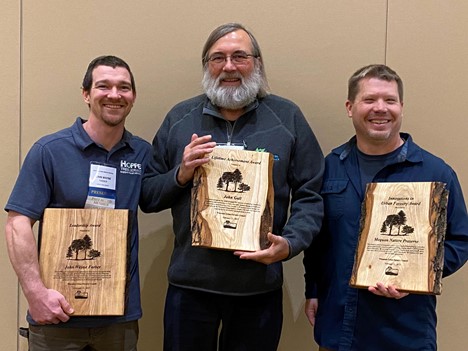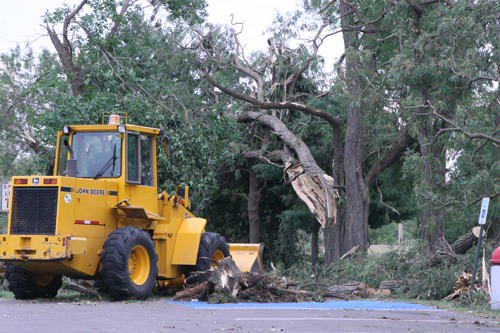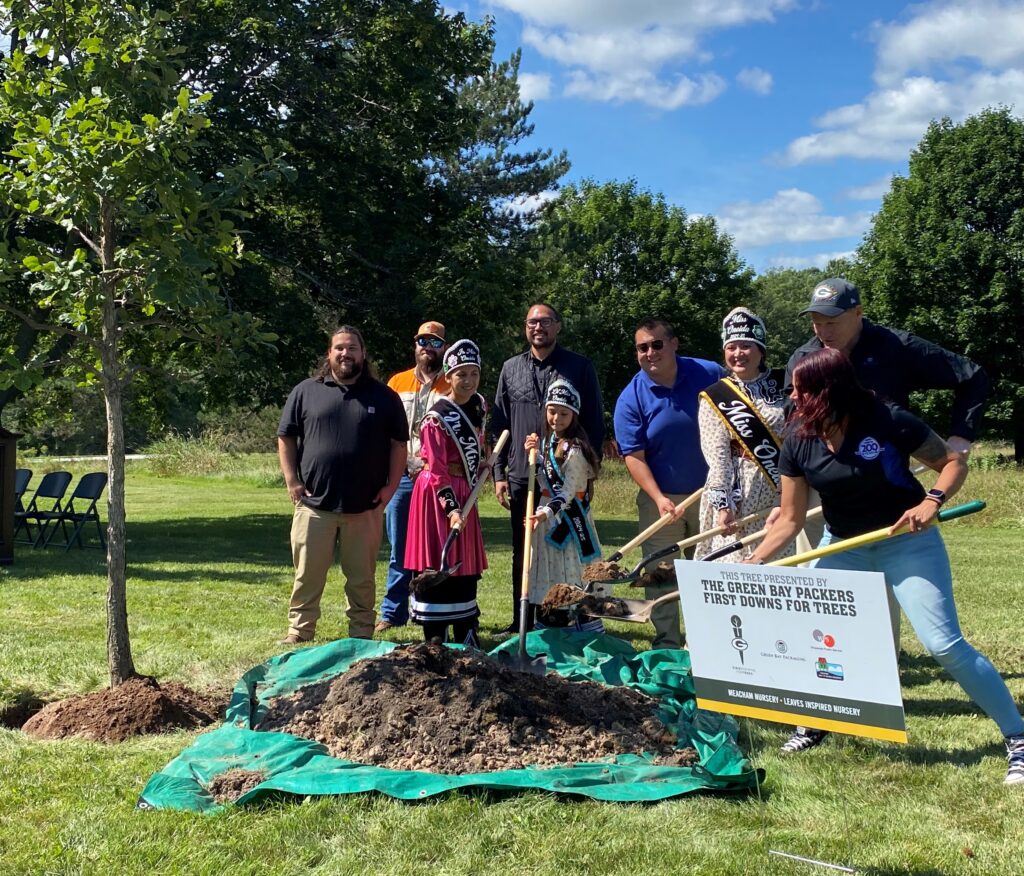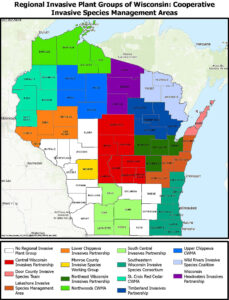 The Urban Forestry Council presents annual awards to outstanding individuals, organizations, communities and tribes that further urban forestry in Wisconsin. Awards are presented in the categories of Next Gen, Project Partnerships, Lifetime Achievement, Innovations in Urban Forestry, Leadership and new this year, Species Diversity. Continue reading “Urban Forestry Council Award Nominations Due Oct. 31”
The Urban Forestry Council presents annual awards to outstanding individuals, organizations, communities and tribes that further urban forestry in Wisconsin. Awards are presented in the categories of Next Gen, Project Partnerships, Lifetime Achievement, Innovations in Urban Forestry, Leadership and new this year, Species Diversity. Continue reading “Urban Forestry Council Award Nominations Due Oct. 31”
Taking action
Tree City USA Updates
 Tree City USA Interactive Map
Tree City USA Interactive Map
Do you know how many Tree City USA communities are in Wisconsin or the longest-running Tree City USA in the state? Find this and other eye-opening information by visiting the new Arbor Day Foundation interactive Tree City USA map. Tree City USA statistics and fun facts are now available for the entire nation, as well as individual states, using this online tool.
Submit Your Tree City USA Application
The Tree City USA program provides communities with a four-step framework to maintain and grow their tree cover. It also provides an avenue to celebrate accomplishments, showing residents, visitors and the entire country their commitment to the mission of environmental change. Continue reading “Tree City USA Updates”
DNR Deer And Geese Damage Abatement And Control Grants Now Open
 Urban Wildlife Damage Abatement and Control grants help urban areas develop wildlife plans, implement specific damage abatement and/or control measures for white-tailed deer and/or Canada geese. They are available to any town, city, village, county or tribal government in an urban area. This grant provides a 50% cost share up to $5,000 for eligible costs. The application deadline is Dec. 1, 2024. Continue reading “DNR Deer And Geese Damage Abatement And Control Grants Now Open”
Urban Wildlife Damage Abatement and Control grants help urban areas develop wildlife plans, implement specific damage abatement and/or control measures for white-tailed deer and/or Canada geese. They are available to any town, city, village, county or tribal government in an urban area. This grant provides a 50% cost share up to $5,000 for eligible costs. The application deadline is Dec. 1, 2024. Continue reading “DNR Deer And Geese Damage Abatement And Control Grants Now Open”
DNR Announces Recipients Of Wisconsin Urban Forestry Catastrophic Storm Grants
By Nicolle R. Spafford, DNR Urban Forestry Grants Manager; Nicolle.Spafford@wisconsin.gov or 715-896-7099
 The Wisconsin Department of Natural Resources (DNR) announced the recipients of the Urban Forestry Catastrophic Storm Grants to assist with damage sustained during statewide extreme storm events that took place June 21-25, 2024. Continue reading “DNR Announces Recipients Of Wisconsin Urban Forestry Catastrophic Storm Grants”
The Wisconsin Department of Natural Resources (DNR) announced the recipients of the Urban Forestry Catastrophic Storm Grants to assist with damage sustained during statewide extreme storm events that took place June 21-25, 2024. Continue reading “DNR Announces Recipients Of Wisconsin Urban Forestry Catastrophic Storm Grants”
First Downs For Trees Celebrates 14 Years
By Patricia Lindquist, Urban Forestry Coordinator; patricia.lindquist@wisconsin.gov or (715) 574-1314
 On Aug. 20, 2024, the First Downs for Trees program celebrated its 14th year with a ceremonial tree planting at Amelia Cornelius Park, Oneida Nation. The program is a cooperative effort between the DNR, the Green Bay Packers, Wisconsin Public Service and corporate sponsor Green Bay Packaging, Inc. The donated trees offset the Packers’ carbon footprint when flying to away games.
On Aug. 20, 2024, the First Downs for Trees program celebrated its 14th year with a ceremonial tree planting at Amelia Cornelius Park, Oneida Nation. The program is a cooperative effort between the DNR, the Green Bay Packers, Wisconsin Public Service and corporate sponsor Green Bay Packaging, Inc. The donated trees offset the Packers’ carbon footprint when flying to away games.
In 2024, 402 landscape-sized trees were planted by sixteen communities: Allouez, Ashwaubenon, Bellevue, Brown County, De Pere, Green Bay, Hobart, Howard, Lawrence, Ledgeview, Morrison, Oneida, Pulaski, Scott, Suamico and Wrightstown. The trees were provided by Meacham and Leaves Inspired nurseries. Since its inception, the First Downs for Trees program has donated 7,194 trees. Continue reading “First Downs For Trees Celebrates 14 Years”
CISMAs Plan Invasive Plant Events
When it comes to fighting invasive plants, Wisconsin’s Cooperative Invasive Species Management Areas (CISMAs) are often the first line of defense (and offense).
These regional groups provide a localized resource for landowners looking for invasive plant education, identification support and assistance with controlling invasives on their properties.
Jack Pine Budworm Outbreak Subsides
By Paul Cigan, DNR Forest Health Specialist, Hayward
Paul.Cigan@wisconsin.gov or 715-416-4920

Aerial view of jack pine budworm defoliation in jack pine stands in Douglas County during the 2023 outbreak. / Photo Credit: Paul Cigan, Wisconsin DNR
Jack pine defoliation caused by the jack pine budworm (JPBW) continued at mostly light levels this year, affecting stands in the Central and Northwest Sands Ecological Regions of Wisconsin.
In the Northwest Sands, jack pine stands experienced light and scattered defoliation across Burnett, Douglas, Polk and Washburn counties. In the Central Sands, JPBW caused moderate to heavy defoliation across roughly 500 acres of jack pine on county and state forests in Jackson County, east of Black River Falls.
CISMA Events For August, September
By Erika Segerson-Mueller, DNR Invasive Plant Program Specialist, Oshkosh Service Center;
erika.segersonmueller@wisconsin.gov or 715-492-0391
 When it comes to fighting invasive plants, Wisconsin’s CISMAs (Cooperative Invasive Species Management Areas) are often the first line of defense (and offense). These regional groups provide a localized resource for landowners looking for invasive plant education, identification support and assistance with controlling invasives on their properties. Continue reading “CISMA Events For August, September”
When it comes to fighting invasive plants, Wisconsin’s CISMAs (Cooperative Invasive Species Management Areas) are often the first line of defense (and offense). These regional groups provide a localized resource for landowners looking for invasive plant education, identification support and assistance with controlling invasives on their properties. Continue reading “CISMA Events For August, September”
DNR Urban Forestry Council Welcomes New Members
The Wisconsin Department of Natural Resources (DNR)’s Division of Forestry recently welcomed two new members to the Wisconsin Urban Forestry Council and said farewell to several members who contributed much to the council. In addition, eight council members renewed their commitment for another 3-year term.
The Wisconsin Urban Forestry Council is an advisory committee to the DNR’s Division of Forestry, guiding the best ways to preserve, protect, expand and improve Wisconsin’s urban and community forest resources. The council is comprised of 23 people appointed by the Secretary of the DNR.
Continue reading “DNR Urban Forestry Council Welcomes New Members”
Inflation Reduction Act Community Change Grant Opportunity
 The U.S. Environmental Protection Agency (EPA)’s new Environmental and Climate Justice Community Change Grants program (Community Change Grants) has announced a Notice of Funding Opportunity for approximately $2 billion dollars in Inflation Reduction Act funds in environmental and climate justice activities to benefit disadvantaged communities through projects that reduce pollution, increase community climate resilience and build community capacity to address environmental and climate justice challenges. Continue reading “Inflation Reduction Act Community Change Grant Opportunity”
The U.S. Environmental Protection Agency (EPA)’s new Environmental and Climate Justice Community Change Grants program (Community Change Grants) has announced a Notice of Funding Opportunity for approximately $2 billion dollars in Inflation Reduction Act funds in environmental and climate justice activities to benefit disadvantaged communities through projects that reduce pollution, increase community climate resilience and build community capacity to address environmental and climate justice challenges. Continue reading “Inflation Reduction Act Community Change Grant Opportunity”
